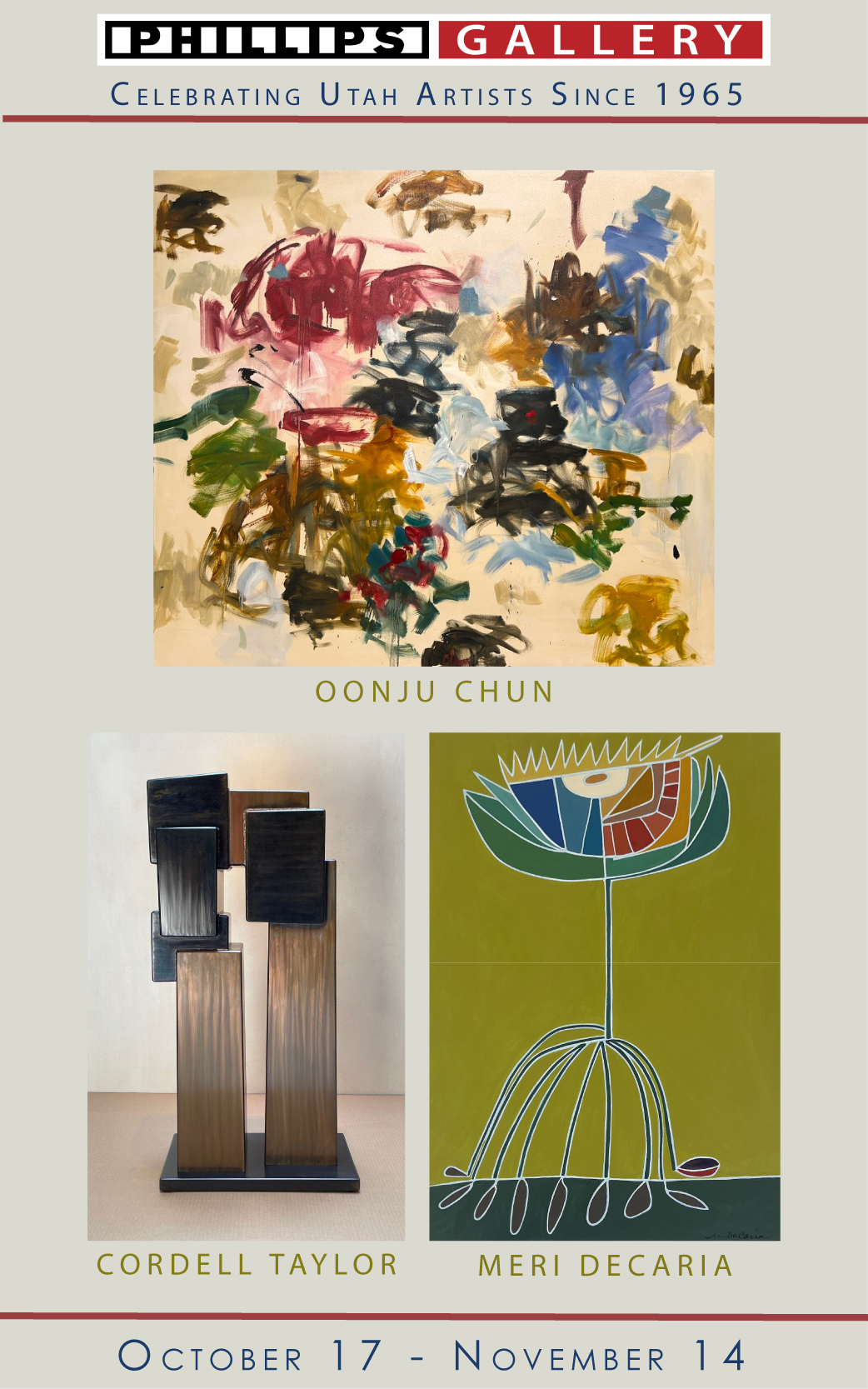Cultivated Surfaces, the name of Nathan Mulford’s new show at “A” Gallery (where it is surrounded by the recently reviewed works of Jeff Juhlin and Halee Roth, among others) is without doubt one of the finest exhibition titles to come along in a while. To understand why, it might be helpful to review the history—briefer than we might think—of “abstraction.”
Abstraction is, of course, a primary characteristic of modern art. But “modernism” as a cultural characteristic was first sighted during the High Gothic in 1400, and has played a part of every cultural advance since the Dark Ages. The lasting connection between abstraction and art that resonates through our awareness was actually created right around the turn of the 20th century, by Henri Matisse. And he did it twice: once as a young man at the beginning of his career, as a sculptor and painter, and again near the end of his life, when he could no longer hold a chisel or a paintbrush.
In our day, abstraction is largely taken to mean freedom from representation. That was never true of the early works of Matisse. In them, we see him making representational, often figural drawings, paintings, and sculptures, then repeating the subject while removing the less important visual information, seeking the subject’s essential traits. A human figure becomes closer and closer to a set of curves that in spite of their simplicity, convey the pose, the energy and other conditions of the model. This was the great discovery of the time: how the key qualities of the subject could survive the subtraction of many details that diluted what the artist saw most tellingly in the subject.
Much later, when Matisse lost the ability to control a brush, he began to use scissors to cut shapes out of paper. These bold shapes showed another way of conveying, for example, the dynamic quality of plants through the fundamental shapes of their leaves and their arrangement.

Works by Nathan Mulford at “A” Gallery in Salt Lake City. From left: “Orlana,” “Claypoole” and “Ludlow.” Image by Geoff Wichert.
So what does this have to do with Nathan Mulford? He begins the explanation of his work by referring to his astronomical interests. Those who spend time admiring the heavens may learn the rule that no object of celestial size is shaped like a teacup. The force of gravity guarantees that truly large objects become spherical. Then there are mathematical principles that result in the contrast between straight lines and circles. Then, reversing the view he started with, the artist points out how aerial views of the surface of the Earth reveal the role of such circles in agriculture: specifically in cultivation and especially irrigation. While the easiest way to divide land is into rectangular units, those who must water the resulting spaces have shown that pivoting around a central point, producing distinctive circular patters, offers advantages in efficiency and economy.
So here’s Mulford, contemplating these fundamental patterns brought about by “cultivating” an awareness of universal patterns, or literally cultivating the planet whereupon we stand to contemplate a prime feature of existence. Add in one more factor: like Matisse, and many of the world’s artists who are drawn to the beauty and expressive power of abstraction, he recognizes that not only is it possible to abstract visual information from the physical world without losing sight of the source, but that abstract art that represents something real offers satisfactions that purely decorative marks do not. To what has already been mentioned here, there are such other sources as the characteristic anatomical features controlled by the limits of arms, hands and fingers that viewers may have begun to notice and appreciate on his “cultivated surfaces.”
- “Mt. Marvine,” acrylic on canvas, 36×48 in.
- “Orena,” acrylic on canvas, 36×48 in.
Every member of his audience will find individual associations for these works. As always, seeing them up close and in person will offer rewards not available in photos. Textures, including those produced by his labors, lend a relief character and often a feeling of narrative history, perhaps in theory, while subtle tonal variations contribute to his dimensional illusions. Contemplating one or another offers the familiar pleasure of being aware of how much data surrounds us, how much is out there to be known, without the onerous need or task of comprehending or interpreting it. This doesn’t have to inform in order to produce a tremendous experience of pleasure. The designs are eminently rewarding, and it doesn’t hurt to know they originate in actual, meaningful things that we can encounter and share.
Nathan Mulford: Cultivated Surfaces, “A” Gallery, Salt Lake City, through November 15.
Geoff Wichert objects to the term critic. He would rather be thought of as a advocate on behalf of those he writes about.
Categories: Exhibition Reviews | Visual Arts











